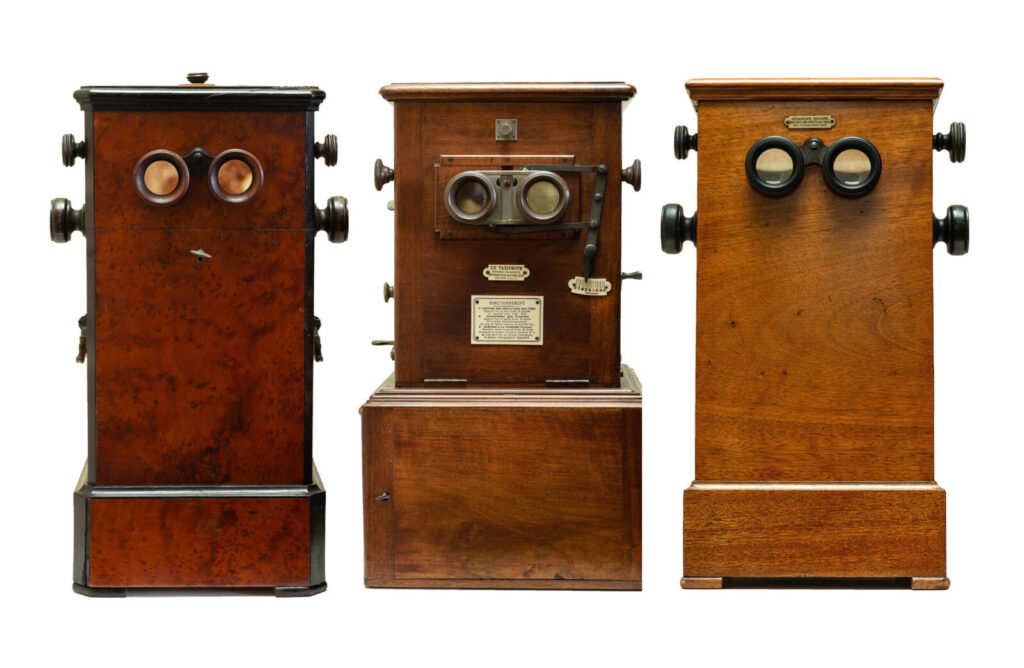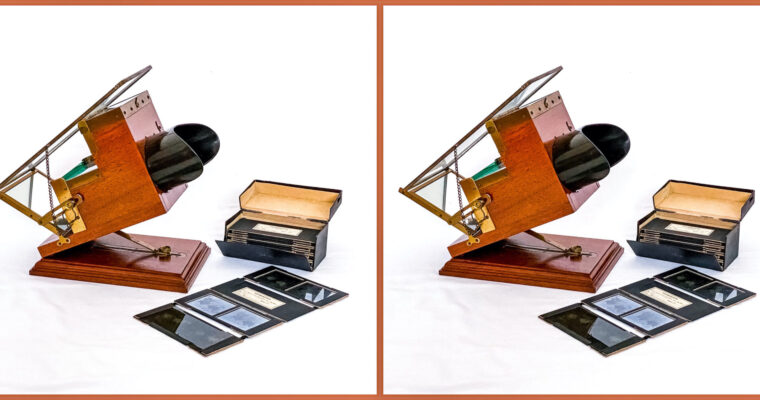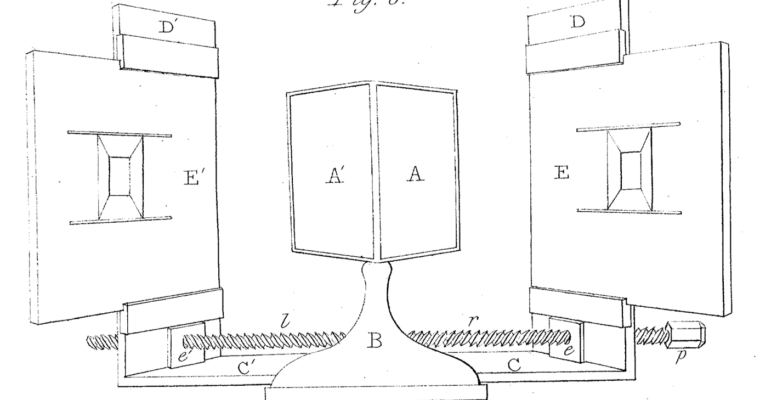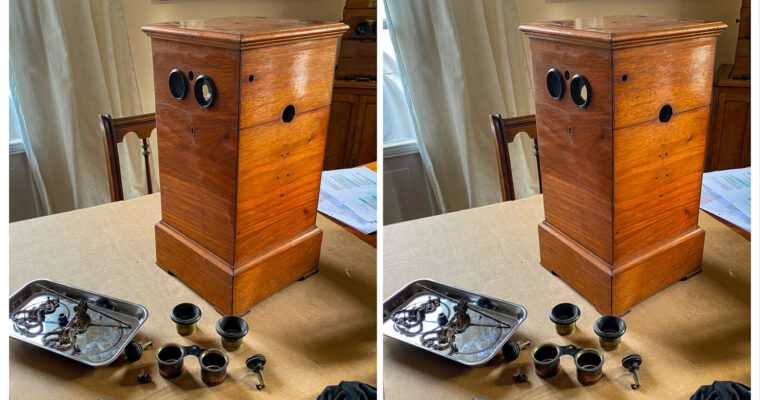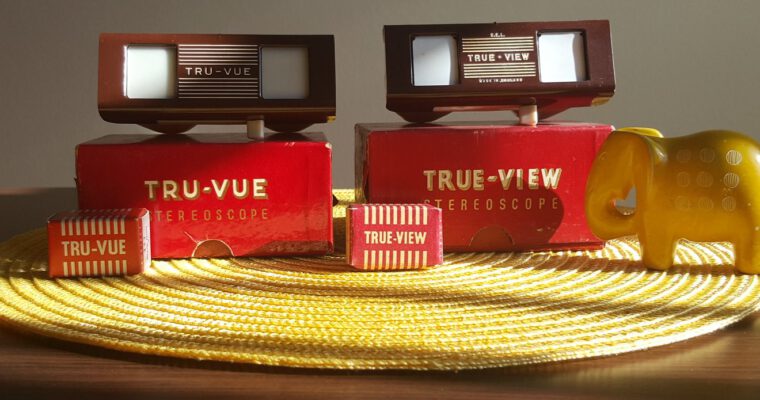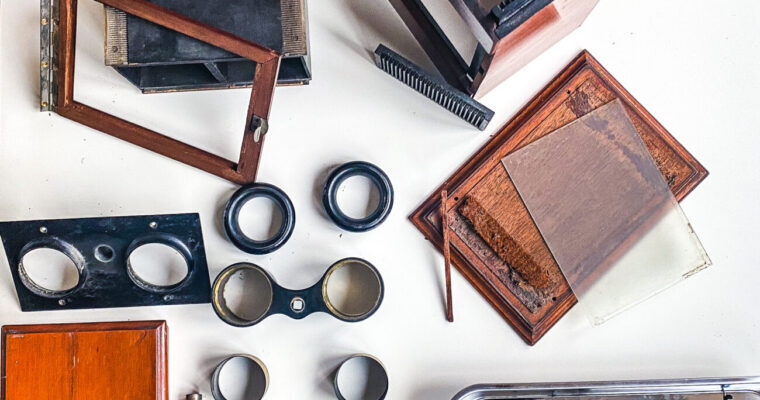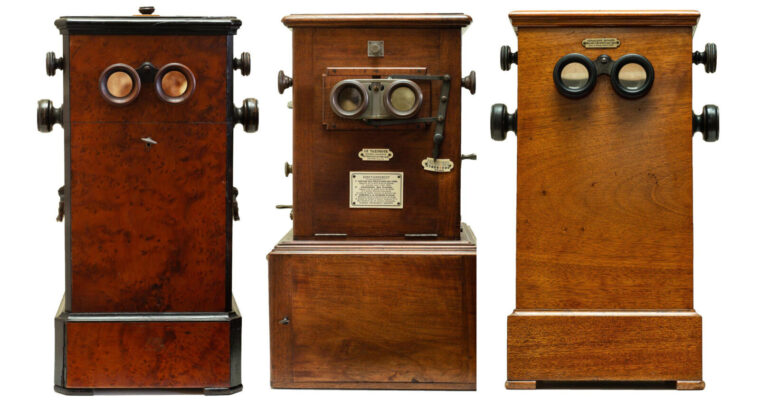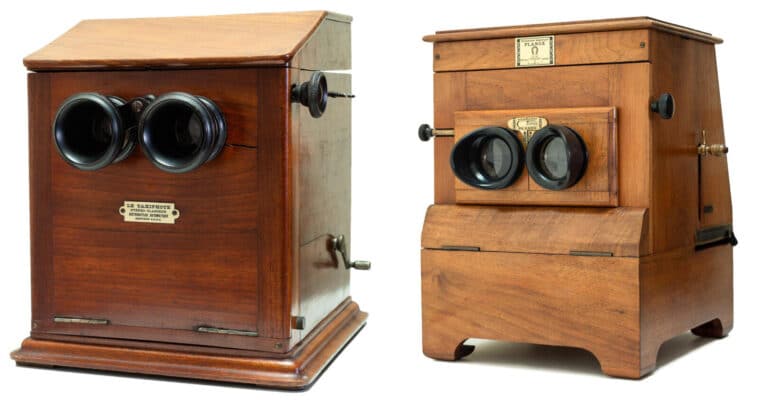If stereoviews allow us a journey through time, stereoscopes are the vehicles that take us there. Antique stereoscopes are simple yet elegant devices that come in a variety of forms. Holding an antique handheld stereoscope, you can imagine the excitement someone else may have felt receiving it as a present for their birthday or Christmas. On the other hand, you also have floor stand semi-automated stereoscopes, that were designed to contain over a thousand stereoviews. These served as a media center in the living rooms of the rich, meant to amaze every visitor, and perhaps even spark a bit of envy. Think of them as the antique equivalents of the latest flat screen TV models! In some ways, antique stereoscopes are witnesses of time, bringing old and forgotten moments back to life. In this section, we will introduce different types of antique stereoscopes and their history, and share tips on building your own stereoscope collection and restoration of these antique treasures.
Stereoscopes
The Ives Kromskop
One of the most remarkable stereoscopes ever produced commercially was the Ives Kromskop (Patent #531,040, Dec 18, 1894). In it, three stereoscopic glass positives made from negatives exposed through red, green, and blue filters are optically superimposed to give a full color image of remarkable quality. It was more than ten years prior to the introduction of relatively crude full color plates such as the Autochrome.
The birth of Stereoscopy: Wheatstone on Binocular Vision 1838, original source
Back in 1838 the concept of binocular vision had not yet been explored or written about anywhere. It was a scientist in his mid 30s who not only described the phenomenon later called stereopsis but also constructed a device to view two flat images in 3D which he called a stereoscope. This is especially remarkable as photography was not invented until one year later. Charles Wheatstone’s observations were based only on drawings. Most of these drawings are based on horizontal mirroring which is why we call them mirror stereos today. Read Wheatstone’s original source here.
A Restorer’s Journey
Sometimes you will get a glimpse of the individual history of your treasure and know where it was stored, wether it was looked after or long forgotten, if the owner was well situated or not, etc. For me, these stories are invaluable. As a passionate restorer, I especially appreciate viewers that have remained untouched since their last use. I carefully remove the dust of decades to reveal the original beauty of a stereoscope. Being the first one to do so feels almost like getting in touch with those who bought it a century ago. I want to take you to one of those journeys.
Le Taxiphote — the most famous French stereo viewer
The Verascope and the Taxiphote are two halves of an unbelievable stereo development effort that went on for 40 years essentially without any changes. The Taxiphote was exported to and patented in many countries. All this serves as an example of how attractive stereoscopy was at that time, and also confirms the quality of the Taxiphotes as a technical device. We can only guess at the prestige of having a Taxiphote at that time.
Mid-Century 35 mm Filmstrip Stereo Viewers
3D filmstrip viewers are a family of stereo viewers that gained prominence in the early 20th century. In fact, it was a small filmstrip viewer called Tru-Vue that re-introduced 3D viewing as a mid-century pastime, made it more affordable than earlier stereoscope sets, and paved the way in the hearts and minds of consumers for the popular 3D reel & card viewers that would come later. For this reason, Tru-Vue has often been called “the missing link” in stereoscopy. Explore some of the most interesting filmstrip stereo viewers here.
Restoring Stereoscopic Antiques
When considering restoration, I always ask myself one very simple question: What would this stereoscope look like today if it had never disappeared from its owner’s living room, but had been cherished and cared for continuously for over 100 years?
Collecting Stereoscopes
In this post, I will talk about collecting antique stereoscopes for glass stereoviews from the period 1850 to 1930. Some tips from my previous post can also be applied to stereoscopes, so I recommend to read this post first. However, collecting stereoscopes comes with some additional challenges that I will address now.
A Multiview Stereoscope Comparison
Multiview stereoscopes are table stereoscopes that are capable of showing multiple images in one viewing session. These viewers use a slide tray or chain in which the stereoviews are placed. By turning a crank or pushing down a lever, the images are displayed one by one.

